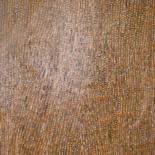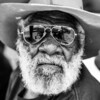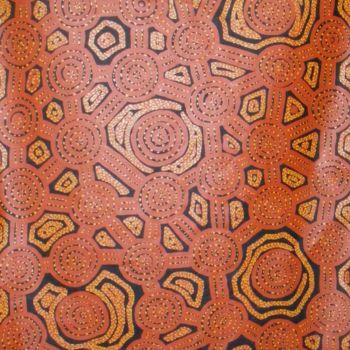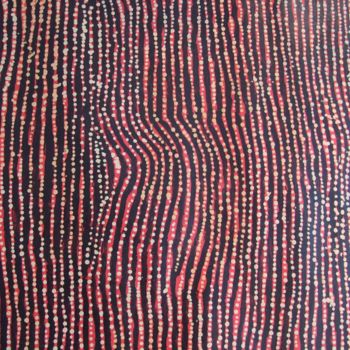


Let us know if you would like to see more photos of this artwork!
- Back of the work / Side of the work
- Details / Signature / Artwork's surface or texture
- Artwork in situation, Other...
Tali Sandhills (2008) Painting by Willy Tjungarrayi
More info
- Packaging (Tube) All artworks are shipped with a premium carrier, carefully protected and insured.
- Tracking Order tracking until the parcel is delivered to the buyer. A tracking number will be provided so that you can follow the parcel in real-time.
- Delay Most packages are delivered worldwide within 1 to 3 weeks (Estimate)
- Customs not included The price does not include customs fees. Most countries have no import tax for original artworks, but you may have to pay the reduced VAT. Customs fees (if any) are to be calculated on arrival by the customs office and will be billed separately by the carrier.
More info
- Trackable Online Certificate of Authenticity Authenticity Certificates can be verified online at any moment by scanning the artwork code.
- Artist Value Certification Experts study the work and career of an artist then establish an independent and reliable average price value. The average price value situates the artist on a price range for a given period. The experts may also be asked to establish a more precise estimate for a particular work.
More info
100% secure payment with SSL certificate + 3D Secure.
More info
-
Original Artwork (One Of A Kind)
Painting,
Acrylic
on Linen Canvas
- Dimensions Height 70.9in, Width 49.2in
- Framing This artwork is not framed
- Categories Paintings under $20,000 Abstract
This stunning piece is very large at 180 cms by 125 cms. It was painted in Alice Springs Australia in 2008. It comes with a full Certificate of Authenticity.
Willy Tjungurrayi 1932 - 2018
Born: Patjantji, Northern Territory of Australia
Language Group: Pintupi
Community: Kintore
One of the most sought-after painters of the Western Desert, Willy Tjungurrayi was a senior Pintupi man, entitled by his ancestry and communal position to paint the sacred and secret Tingari cycle. He has been acknowledged as one of the great colourists of contemporary Aboriginal painting.
Willy was in the middle one of three brothers; Yala Yala Gibbs (founding member of the Papunya art movement and senior custodian of secret/sacred men business) was the eldest and George Ward Tjungurrayi the youngest. They were all sons of Pulpalpulpalnga Tjapaltjarri but had different mothers.
Willy Tjungurrayi was born around 1932 at Patjantja, southwest of Lake Mackay in the Northern Territory. He came into Haast's Bluff in 1956 with other Pintupi people, and in 1959 Willy was trucked across to Papunya with most of the other Aboriginal residents due to problems with Haasts Bluff's water supply. Willy began painting for Papunya Tula Artists in 1976. By the 1980s Willy was recognized as a senior Pintupi painter, and he joined the movement of return to the Pintupi homelands. He lived in Walungurru (Kintore) until 2003 and split his time between Alice Springs and Walungurru.
Stories from the Tingari Dreaming song cycle, and the land around Haast's Bluff, Wilkinkarra (Lake Mackay) and Kaakuratintja (Lake MacDonald), were Willy Tjungarrayi's two great linked themes. For some subjects Willy painted dozens of dotted Roundels (concentric circles), linked by parallel lines, the spaces between them filled with bright, flat primary and mixed colours, a depiction of the travels and stopping places of the Tingari Men, an image of the rhythmic repetition of the songs associated with the Tjukurpa (Creation era or Dreaming).
More recently, Tjungarrayi's paintings featured hundreds of endless wavy lines in an ochre monochrome shimmer across the canvas on a pale background. These paintings illustrate (or witness, might be more correct) the sand hills and the fierce hailstorm that killed the ancestral Tingari Men in the Dreamtime. Willy Tjungarrayi's work is highly sought after, and has been acquired for many major private and public collections.
Collections
Aboriginal Art Museum, The Netherlands
Artbank, Sydney
Art Gallery of New South Wales, Sydney
Flinders University Art Museum, Adelaide
National Gallery of Australia, Canberra
Parliament House Art Collection, Canberra
The Holmes a Court Collection, Perth
The Kelton Foundation, Santa Monica
Hank Ebes Collection, Melbourne
The Luczo Family Collection, USA
Corrigan Collection, Sydney
Selected Exhibitions
2019 Desert Painters of Australia, Larry Gagosian Gallery, New York, USA - from the Steve Martin & Anne Springfield Collections and Kluge-Ruhe Collection of the University of Virginia, USA
2019 Defining Tradition: the first wave & its disciples, Kate Owen Gallery, Sydney
2017 Constellation, Paul Johnstone Gallery, Darwin
2010 Lost Tribe, Kate Owen Gallery, Sydney
2004 Papunya Tula Artists, Gallery Gabrielle Pizzi, Melbourne
2004 Australian Aboriginal Art Collector's Exhibition, Flinders Lane Gallery, Melbourne
2003 Kintore Kiwirrkura, Gallery Gabrielle Pizzi, Melbourne
1994 Central Australian Aboriginal Art and Craft Exhibition, Araluen Centre, Alice Springs
1994 Yiribana, Art Gallery of New South Wales, Sydney
1991 The Painted Dream: Contemporary Aboriginal Paintings from the Tim and Vivien Johnson Collection, Auckland City Art Gallery and Te Whare Taonga o Aoteroa National Art Gallery, New Zealand.
1989 Aboriginal Art: The Continuing Tradition, National Gallery of Australia, Canberra
1988 Australian Aboriginal Graphics from the Collection of the Flinders University Art Museum, Adelaide
1987 Art and Aboriginality, Aspex Gallery, Portsmouth, UK
1985 Dot and Circle, a retrospective survey of the Aboriginal acrylic paintings of Central Australia, Royal Melbourne Institute of Technology, Melbourne.
1983 Papunya: paintings from the Central Australian Desert, touring exhibition, America and Europe.
1982 Georges Gallery, Melbourne; Brisbane Festival; Mori Gallery, Sydney.
Related themes
Willy TjungarrayiAboriginal ArtAustraliaDot PaintingAustralian Art
Willy Tjungurrayi (c.1932-2018), a preeminent figure in Western Desert art, stood as one of the most coveted painters, recognized for his mastery in portraying the sacred and secret Tingari cycle. As a senior Pintupi man, Willy held the ancestral and communal privilege to depict these profound Dreaming stories and earned acclaim as one of the contemporary Aboriginal painting's great colorists.
Born around 1932 in Patjantja, southwest of Lake Mackay in the Northern Territory, Willy Tjungurrayi migrated to Haast's Bluff in 1956 alongside other Pintupi people. In 1959, due to water supply issues, he relocated to Papunya with the majority of Aboriginal residents. It was in 1976 that Willy commenced his artistic journey with Papunya Tula Artists, becoming an instrumental part of the burgeoning movement.
By the 1980s, Willy Tjungurrayi had ascended to the status of a senior Pintupi painter, actively participating in the return to Pintupi homelands. Residing in Walungurru (Kintore) until 2003, he later divided his time between Alice Springs and Walungurru.
Willy's artistic repertoire primarily focused on the Tingari Dreaming song cycle and the landscapes surrounding Haast's Bluff, Wilkinkarra (Lake Mackay), and Kaakuratintja (Lake MacDonald). A distinctive feature of his art involves the depiction of the travels and resting places of the Tingari Men through dotted Roundels, connected by parallel lines and adorned with vibrant primary and mixed colors. This intricate imagery symbolized the rhythmic repetition of the Tjukurpa, encapsulating the essence of the Creation era or Dreaming.
In more recent works, Willy Tjungurrayi's paintings shifted to showcase hundreds of endless wavy lines in ochre monochrome, creating a mesmerizing shimmer across the canvas against a pale background. These pieces serve as a visual witness to the sand hills and the fierce hailstorm that, according to Dreamtime lore, brought about the demise of the ancestral Tingari Men.
Willy Tjungurrayi's contributions to Indigenous art made his work highly sought after, finding a place in numerous major private and public collections.
-
Nationality:
AUSTRALIA

- Date of birth : unknown date
- Artistic domains: Represented by a Gallery,
- Groups: Contemporary Australian Artists Artists presented by a gallery





